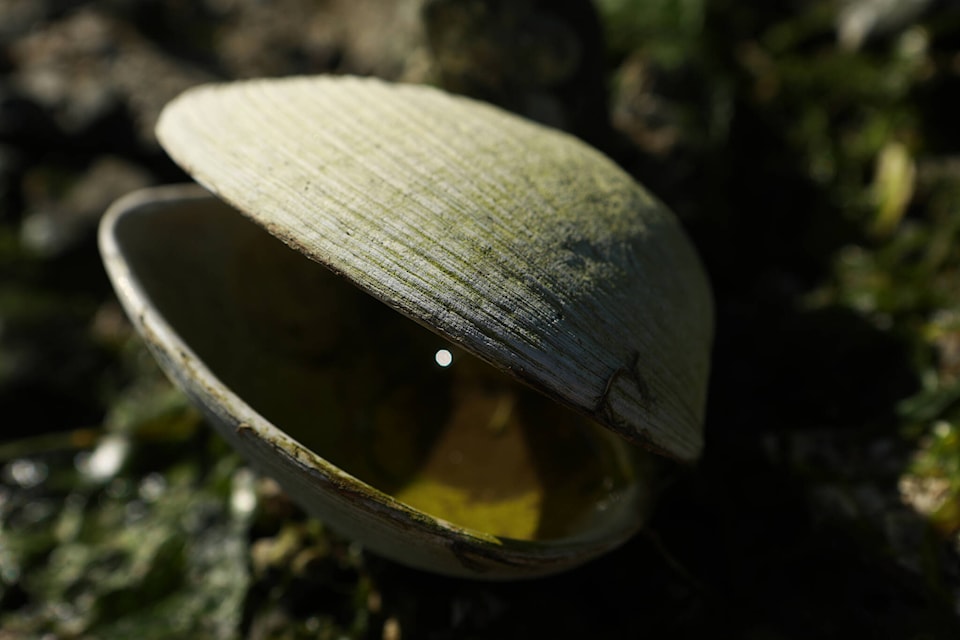Rochelle Baker, Local Journalism Initiative Reporter CANADA’S NATIONAL OBSERVER
Two dozen young men spilled out of their tents just after dawn, pulled on gumboots and work gloves, and lugging shovels and buckets, trudged down a logging road to a remote bay on Vancouver Island’s wild West Coast.
There was a moment of calm punctuated by the breaths of two killer whales breaking the surface of the bay while they waited for the tide to drop so they could begin work.
The moment the waters retreated, the group of First Nations youth, their adult mentors and knowledge holders, squelched onto the tidal flat in unison to haul rocks, debris and shift shellfish as quickly as possible before the ocean waters flooded back in.
The Nuu-chah-nulth Youth Warriors spent three days near Sarita Bay, west of Port Alberni in early July to construct a traditional clam garden for the Huu-ay-aht community as part of a broader project to strengthen coastal First Nations’ culture, connections, food security and climate resilience.
With guidance from Huu-ay-aht knowledge holder Tommy Joe, the Warriors dug out boulders and stones from a natural clam bed to construct a rock wall extending in a semi-circle from the shore down to the low tide line. The new aquaculture terrace will transform the rocky shoreline, providing the shellfish with more space, improved habitat, water flow and feeding opportunities to boost the clams’ natural productivity, Joe said.
The Warriors, with youth groups in eight different nations across Nuu-chah-nulth territories, is a land-based leadership program that combines community service, skill-building and traditional knowledge.
Funding from the province’s Indigenous Food Systems and Agriculture Partnership Program (IFSAP) helped the Warriors to restore an existing clam bed in Opitsaht in Tla-o-qui-aht territory on Meares Island in May and will allow the youth to construct another in Kyuquot in Ka:’yu:’k’t’h’/Che:k:tles7et’h’ First Nations territory this summer.
As the Warriors worked their patch of shoreline in the increasingly hot sun, so did a black bear 100 metres down the beach, snuffling seaweed and overturning rocks in search of crabs and marine creatures.
As the stone wall took shape, the Warriors’ Huu-ay-aht co-ordinator Leonard Nookemis paused to wipe the sweat off his forehead, leaving a smear of mud in its place.
“We’ve crushed building this clam wall so far,” Nookemis said.
“I’m really happy to see the progress we made and how it works. It’s a bit of an ongoing experiment.”
Now that the wall is constructed it will be up to the Huu-ay-aht community to come and regularly rake the terrace, maintain the walls, and rake and clean the bed to create the conditions for the Manila and littleneck clams to thrive, he said.
The area is already a popular harvest location for the nation, and there’s evidence of another clam wall in a nearby location that is now too deep underwater to be used or maintained but acts as a historical record of the nation’s sustainable use of the land.
There are traditional clam gardens located the length of the B.C. coast, some of the mariculture systems are older than 3,000 years old and have fed First Nations communities for generations. And research indicates that traditional walled clam gardens contained four times the number of butter clams and more than double the amount of littleneck clams compared to uncultivated beaches.
“There’s a mark of our people already here,” Nookemis said.
“Now we’re building on that as a new generation, which I find really cool.”
READ ALSO: VIDEO: Restoring the culinary and cultural bounty of ancient Indigenous sea gardens in B.C.
